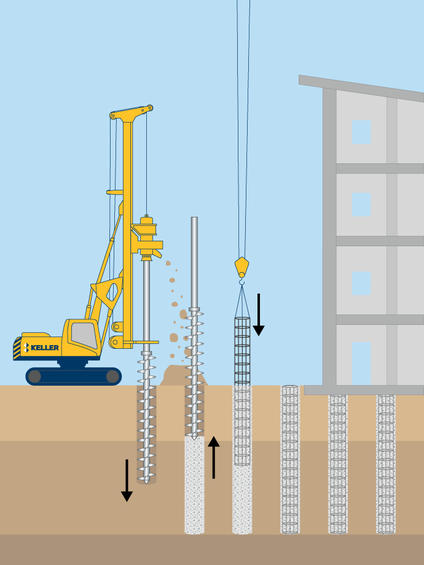Continuous flight auger (CFA) piles are a type of bored cast-in-place replacement pile. Piles are drilled and concreted in one continuous operation enabling much faster installation time than for other piles of this type. Reinforcement is placed into the wet concrete after casting, enabling the pile to resist the full range of structural loading.

Common uses
Process
CFA piles are constructed by rotating a hollow stem continuous flight auger into the soil to a designed depth. Concrete or grout is pumped through the hollow stem, maintaining static head pressure, to fill the cylindrical cavity created as the auger is slowly removed. The reinforcement cage is placed through the freshly placed concrete. Typically, Keller CFA piles are reinforced with a rigid six metre-long cage as a minimum, but it’s possible to install much longer cages as and when required by the design or specification. If required, a specially developed vibrator unit can help accurately locate the reinforcement cages.
Advantages
Quality assurance
Close control of the installation process is essential to ensure the highest quality pile construction.
All Keller CFA rigs are equipped with sensitive state-of-the-art instrumentation that monitors all aspects of CFA piling, including pile depth, auger rotation, penetration rate, concreting pressure, extraction rate and over-break. The instrumentation produces an individual log for each pile that includes element identification, date, time and operator details.
This is reinforced by a documented Quality Management System procedure.
Quality assurance is achieved through a range of non-destructive testing methods to evaluate both pile integrity and/or load-settlement performance. Selection of verification technique is project and application specific.